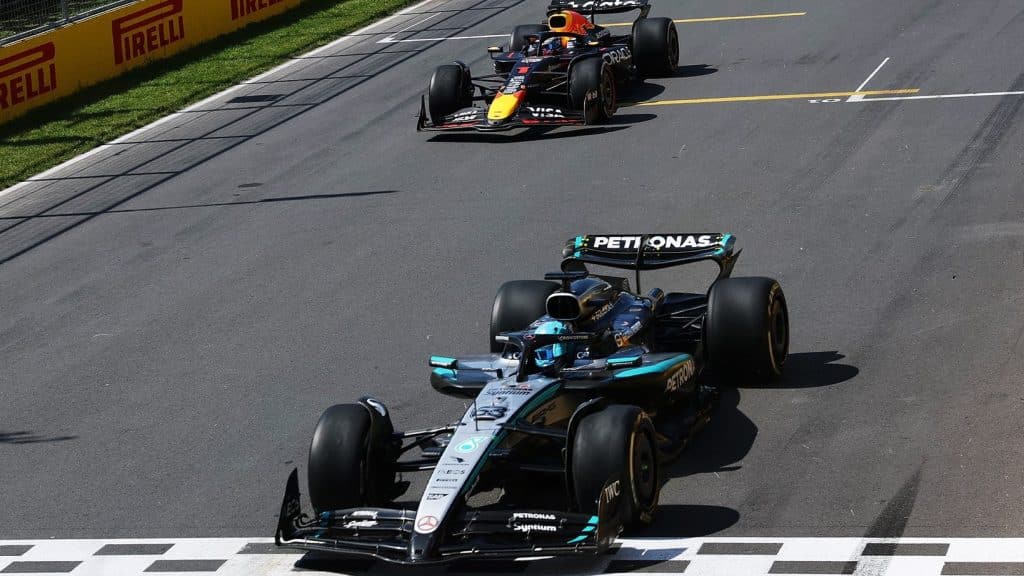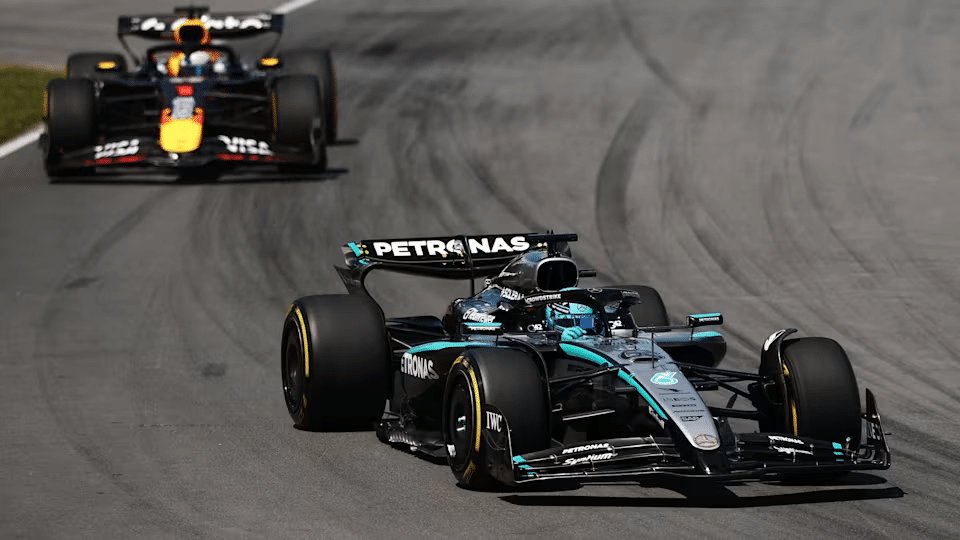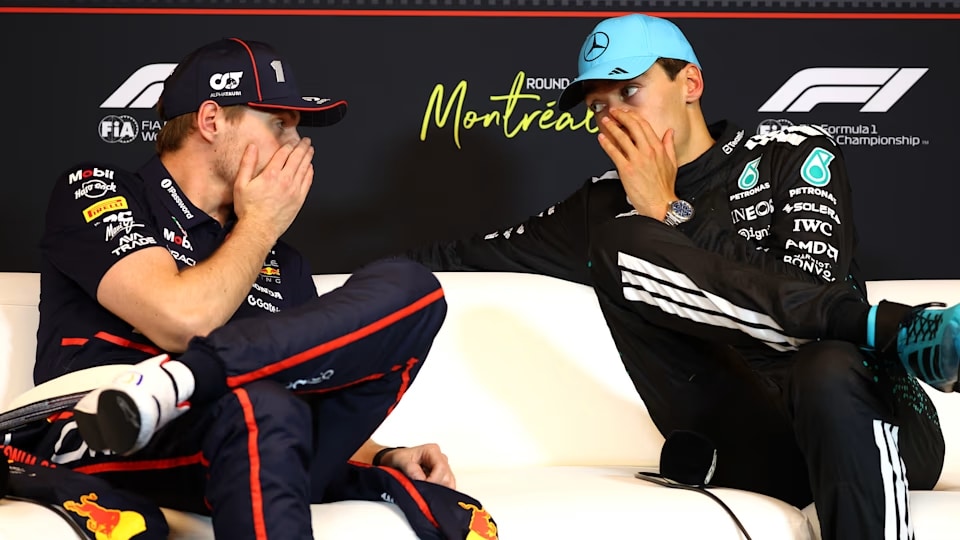During the penultimate lap of the Canadian GP, Russell slows down under the Safety Car and Verstappen pulls alongside him. Red Bull raises concerns, Mercedes defends its driver. After hours of review, the FIA rules against a penalty — reigniting the debate over race management.
On lap 69 of 70 at the Canadian Grand Prix, with the race seemingly over and the entire grid lined up behind the Safety Car, George Russell and Max Verstappen were at the center of one final twist. The Mercedes driver, leading the race and heading toward his fourth career win and first of 2025, radioed in: “Verstappen just overtook me under the Safety Car.” Right behind—or rather alongside—him, the reigning world champion said the same: “George braked suddenly.”

Since 2022, pulling alongside another car during a Safety Car period has been prohibited in Formula 1, with time penalties applied for violations. Fully aware that Verstappen was just one penalty point away from a race ban — and trailing the Dutchman by 26 points in the standings (now 19) — Russell appeared to play it smart, checking his mirrors and braking when he saw Verstappen close behind.
At the same time, sudden braking is also subject to penalties — as Lewis Hamilton knows well, having lost the win in Baku in 2017 after a Safety Car incident with Sebastian Vettel. In this case, however, Russell and Verstappen never made contact.

Red Bull, however, filed a protest against car number 63, citing dangerous driving under the Safety Car, excessive distance from the Safety Car, and unsportsmanlike behavior — including radio messages — aimed at getting Verstappen penalized. According to team principal Christian Horner, who, as in Miami, repeatedly delayed his post-race media session while waiting for the FIA to release documents related to the protest, Russell “braked sharply, clearly watching Max in his mirrors, and left too large a gap to the Safety Car on at least three occasions,” as he told Motorsport.com. As per the regulations, the maximum allowed distance between the Safety Car and the race leader must not exceed ten car lengths — a rule Horner claims Russell broke multiple times.
Mercedes defended its driver by explaining that it’s common practice to brake periodically under the Safety Car to keep tyres and brakes up to temperature — although, in this case, the race was set to finish under Safety Car conditions, raising questions about the actual need for it. According to Russell, the incident in question happened because he had closed in too much on the Safety Car; his onboard footage shows the Mercedes driver gesturing to Bernd Mayländer to speed up.
As for the glance in the mirror, Russell explained it was simply to make sure Verstappen was far enough behind to avoid a potential collision. The team radio, he added, merely described the events factually, without any intent to trigger an investigation. Like Red Bull, Mercedes also presented telemetry data — but focused entirely on Verstappen, aiming to show that the Dutchman had also braked sharply on the same straight and in other parts of the lap.
At the end of a 45-minute hearing, the FIA fully sided with Mercedes and Russell, stating that it is common practice to brake periodically under the Safety Car. They also noted that Race Control allows a certain degree of flexibility regarding the ten-car-length rule and acknowledged that the British driver’s radio messages merely reflected the reality of the situation, with no unsportsmanlike intent.
The outcome, which officially confirmed George Russell’s victory, was only published more than five hours later — highlighting once again the inadequacies of the FIA’s decision-making process. In a championship where every millisecond counts, and despite the use of advanced technologies, the verdict came when the paddock was already empty. There is still much work to be done by Race Control.
Photo: Mercedes-AMG PETRONAS on X, F1.com.

